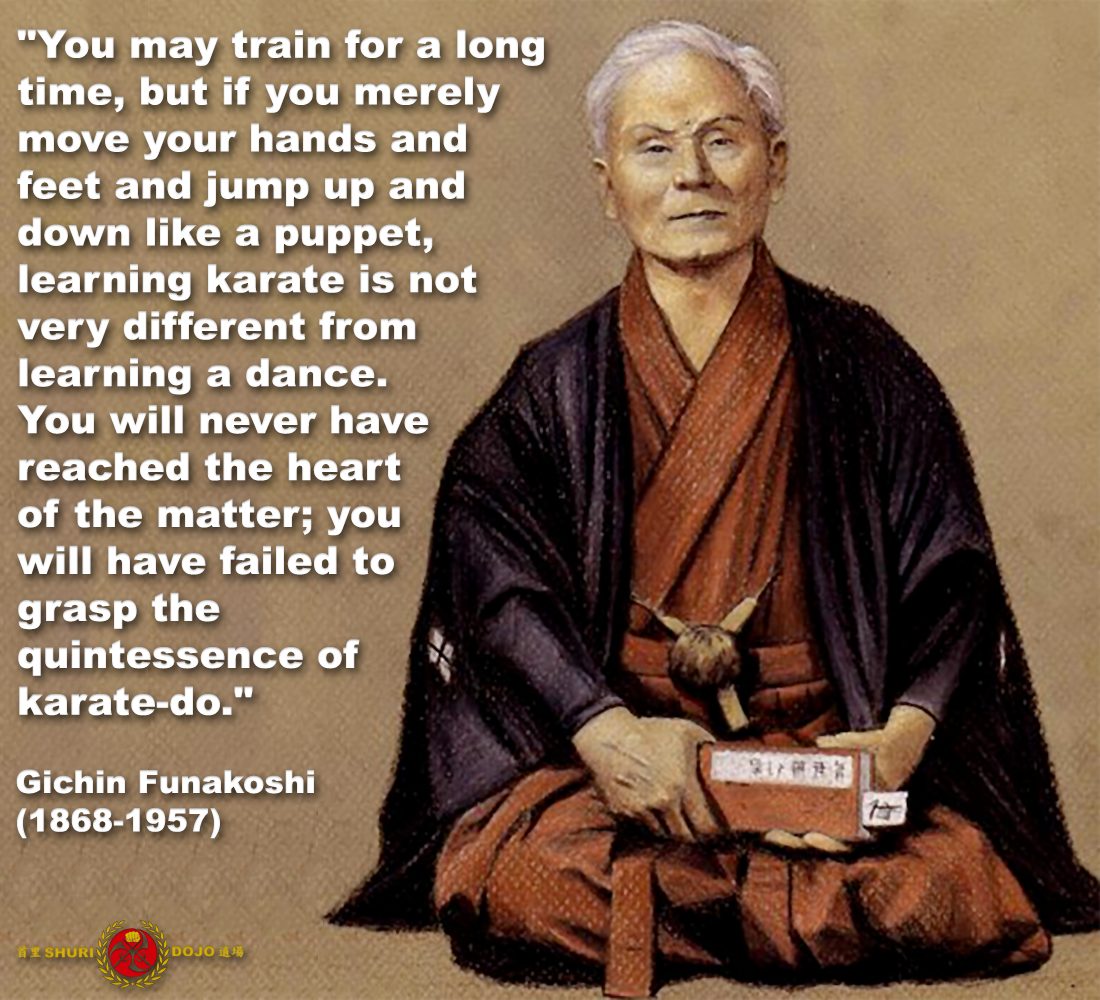
In the West, where in some cases teaching Karate has become a business, a simple method of “teaching” to large groups of paying customers without much effort was needed. The “3 years spent on one Kata” idea was brushed off since Western consumers generally don’t have that kind of patience and want quick progress, new belts, new ranks, and new Kata.
.
For the original purpose of karate, self-protection, various forms of “kumite” has left many instructors teaching ineffective techniques for that purpose. Still today, I have to remind practitioners that dojo sparring or street fighting is NOT self-protection/self-defense.
.
It is important to remember that karate is not, or at least was not, originally a long range art. It was created as a close-range defensive method which contains throws, take-down defenses, sweeps, chokes, and joint locks.
.
One of the most commonly misunderstood and mistranslated words in karate today is “uke.” Despite the familiarity of the word, most karateka will erroneously say that “uke” means “block.” This is something that has been deeply ingrained in karate culture – so much so, that even people who know what the word actually means will still say “block” when speaking about it in English.
.
I think one of the most important things to remember (or discover), is that when performing techniques (or a “block”) – both hands should be used at the same time. A guard is a dead hand. Nice if you’re sparring, but a waste of time otherwise.
.
So what does it all mean?…. Look at the movement instead of the technique.
.
Movement has a shape, and we hang a name on to that shape (jodan uke, gyaku tsuki, gedan barai etc). But then we get hung up on the name. We fail to see what that shape could also be. It’s very common for practitioners to look at a real life application, but not see the technique because it’s not identical to their view of the stylized movement.
.
They are movement patterns. You should not pigeon hole movements into a single technique. (ie this is gedan barai it blocks a kick)
.
Most people view only the end of a technique, with a “wind up” to get the power generated. Their efforts totally employed on trying to find their best “kime”….. and this is why most people fail to see anything else when performing that technique.
.
I often hear people quote; “a punch is a strike is a block”, but this is too simplified. Why? Because they are ignoring the principle behind the movement. In effect they are looking at the end of the technique, when they should be looking at the beginning of it to truly understand what is going on.
.
If the beginning is ignored or not understood, then you will miss the part of the movement that evades, parry’s the attack, controls the limb, destroys the limb, attacks the head/throat/groin, takes them off their feet etc. etc.
.
These are the sequences that become a set of principles for responding to a situation by using the movement in its entirety, from beginning to end.
.
Unfortunately, we have an army of Karate black belts who have no practical application knowledge or skill whatsoever, and whose Karate; “is not very different from learning a dance”.
.
Don’t rely on a “label”. It probably isn’t the right one. ![]()
![]()
